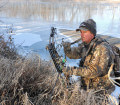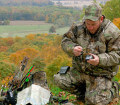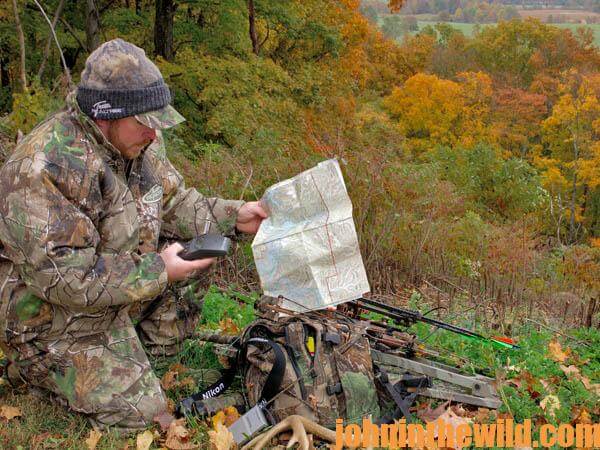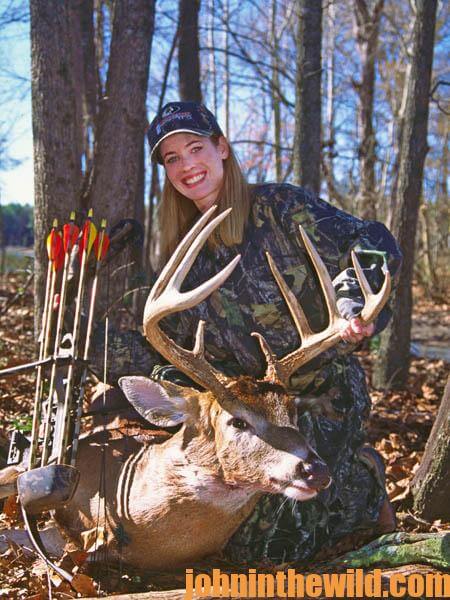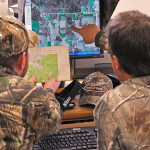John’s Note: A hand-held Global Positioning System (GPS) receiver can help you bag a buck every season. These navigation devices, introduced to the market some years ago, can put you in position to take the bucks other hunters never see, especially on public lands with intense hunter pressure.
When the hunter takes a shot and the buck leaves the area, the hunter may get lost if he attempts to follow the deer or the blood trail.
I become lost most easily when I have to blood trail a deer, because my total concentration focuses on finding the deer. I don’t concern myself with the location of my stand, the direction I must travel to return to my car or what direction I will follow along the trail. Since I often hunt along flood plains and in river- bottom swamps and cane thickets, I may have to follow many trails through dense cover and unfamiliar territory. Once I pinpoint the deer’s location, two thoughts immediately come to my mind: how will I get this deer out of the woods, and which way is my vehicle?
Next, I ask myself…
* how far am I from the car?
* how far am I from my tree stand?
* when I come back to look for the deer after going to get help, will I find the deer again?
I can find answers to all these questions stored in my hand-held GPS receiver. If I have marked my vehicle and tree stand as waypoints, I can turn on my GPS receiver to learn where I am in relationship to my surroundings. I also can see the shortest route back to my tree stand or my vehicle, and I can determine the distance to each of these locations. My receiver also will tell me how much time I will need to drag the deer back to the vehicle. If I choose to leave the deer to get help with recovering the animal, the GPS tells me how long I must travel before I’ll reach my car.
By marking the spot where I’ve found the deer, I easily can return to that same spot with help and bring the deer out of the woods, either during nighttime or daytime. I can look at my GPS receiver and see the course the deer has taken from the place where I’ve shot him to the site where I’ve found him. I can pinpoint not only the direction and the course the deer has traveled, but also the distance the buck has moved before I find him. However, I find my GPS receiver most valuable when a hunting buddy asks me to help him blood trail his deer in territory I never have hunted. When I hunt in a new area, such as another state, I find the receiver’s information crucial to my success in recovering downed game and also for my ability to get that game out of the woods quickly and efficiently.
“How to Hunt Deer Up Close: With Bows, Rifles, Muzzleloaders and Crossbows” or “Deer and Fixings” by John E. Phillips. “Click here to get these books.”
About the Author
John Phillips, winner of the 2012 Homer Circle Fishing Award for outstanding fishing writer by the American Sportfishing Association (AMA) and the Professional Outdoor Media Association (POMA), the 2008 Crossbow Communicator of the year and the 2007 Legendary Communicator chosen for induction into the National Fresh Water Hall of Fame, is a freelance writer (over 6,000 magazine articles for about 100 magazines and several thousand newspaper columns published), magazine editor, photographer for print media as well as industry catalogues (over 25,000 photos published), lecturer, outdoor consultant, marketing consultant, book author and daily internet content provider with an overview of the outdoors. Click here for more information and a list of all the books available from John E. Phillips.

